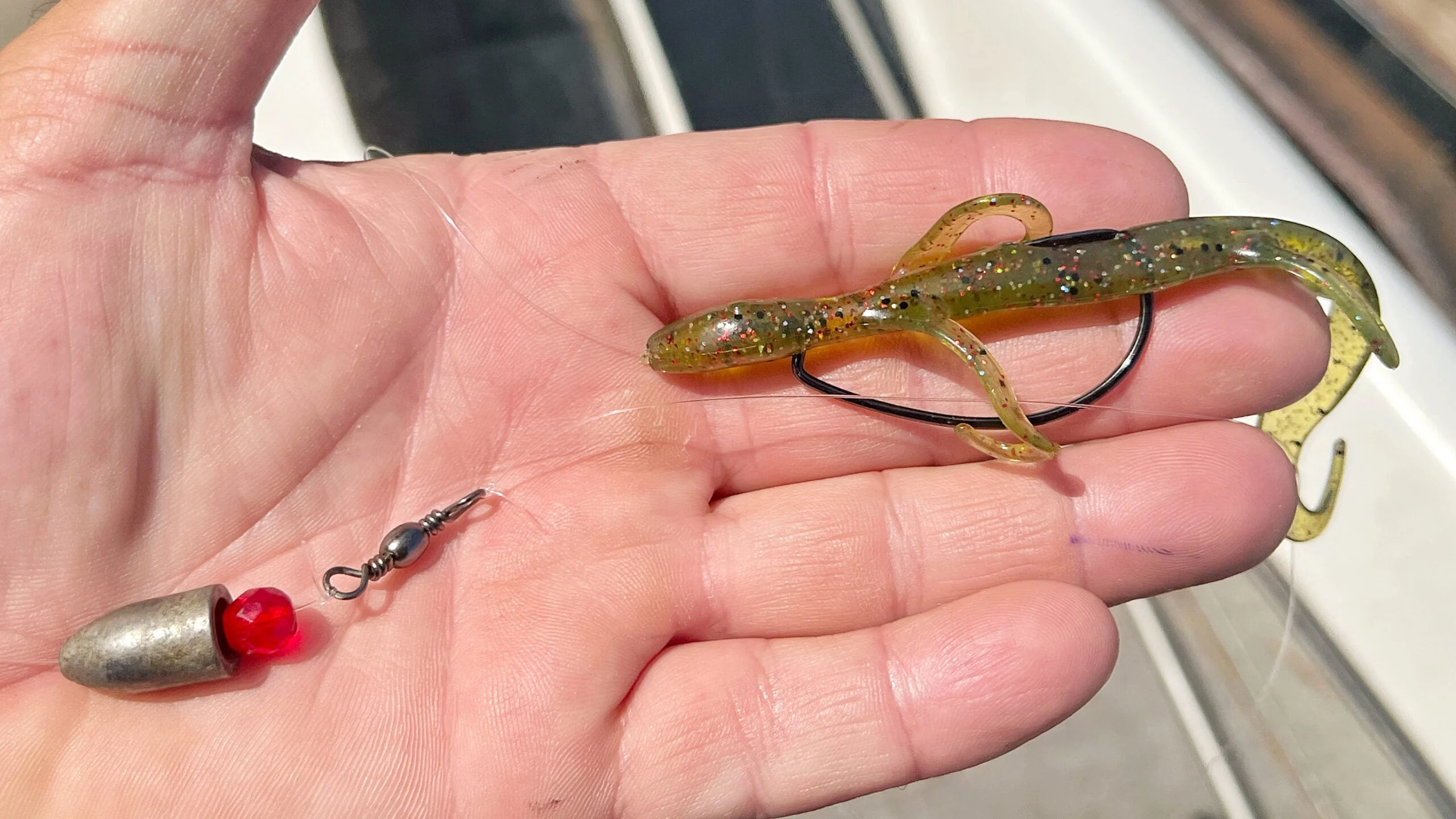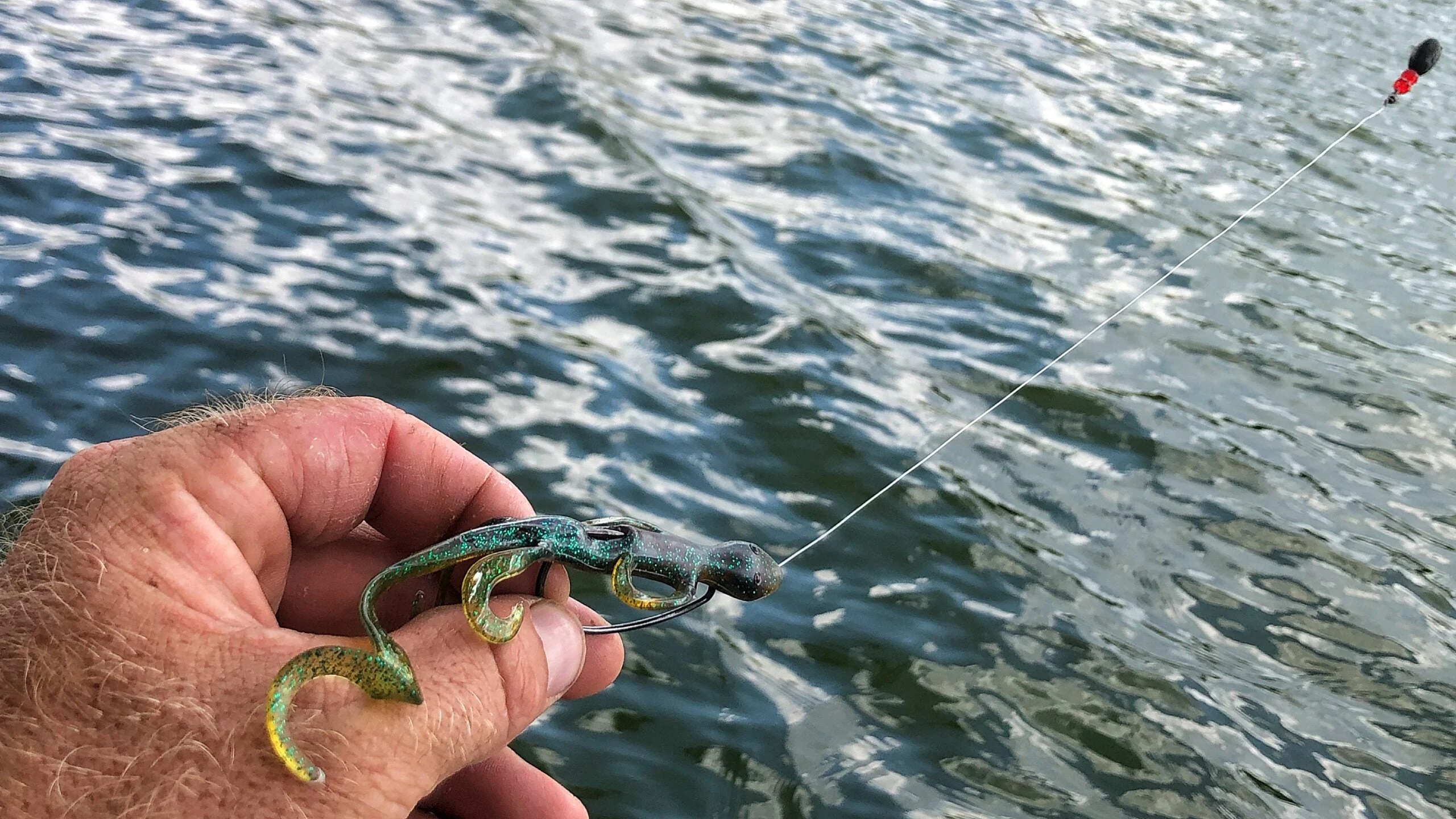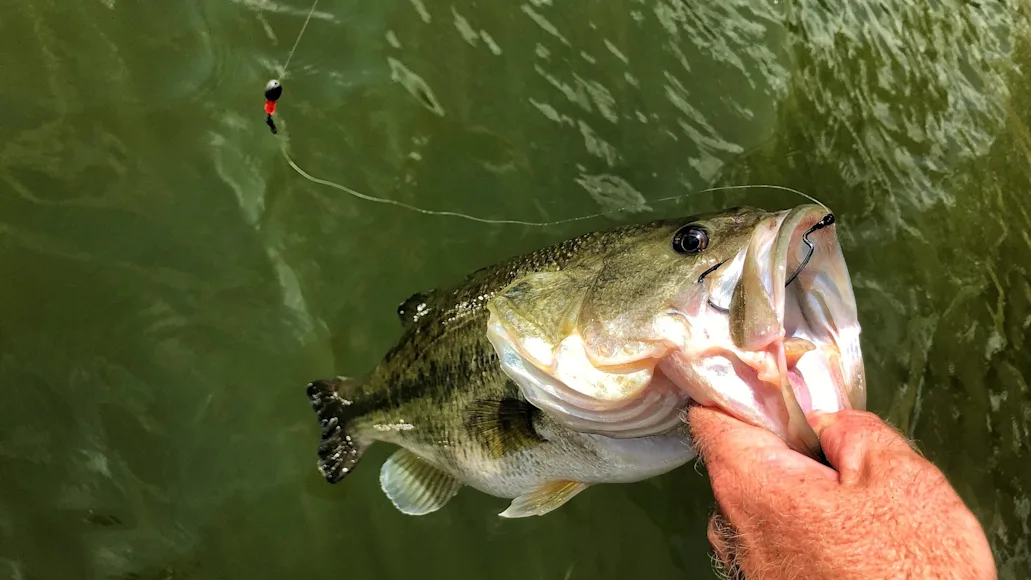We may earn revenue from the products available on this page and participate in affiliate programs. Learn more ›
Carolina rig fishing for bass can be effective throughout the year and at a wide range of depths, but it works best in more than 10 feet of water after bass are done spawning. A Carolina rig can be a little complicated to rig at first, but once you’ve got it down, it’s one of the easiest ways to fish for bass, and it gets loads of bites.
A Carolina rig, or C-rig for short, works especially well on flat points and ledges with relatively clean bottoms. You cast the rig out, drag it slowly along the bottom, and when you feel the rig go mushy, you swing-set into the fish. It’s that simple, generally speaking. But let’s dive into the details of Carolina rig fishing for bass a bit more, including exactly how to rig and fish it.
Table of Contents
What Is a Carolin Rig?
How to Rig a Carolina Rig, Step by Step
When and Where to Use a Carolina Rig
How to Catch Loads of Bass with This Classic Rig
What Is a Carolina Rig?

In the most basic terms, a Carolina rig consists of a weight, a bead, a swivel, leader, hook, and soft-plastic lure, and the rig is designed to run deep to target bass along the bottom of a fishery. The weight gets the lure to the bottom, and the swivel and leader keep it separated from and trailing the weight as you retrieve the rig. When you rig it right and cast it out, the result is a tantalizing worm or creature bait bouncing along the bottom, right where the fish are.
How to Rig a Carolina Rig, Step by Step
Use the steps below and the video above to create perfect Carolina rigs.
Step 1: Slide the weight onto your mainline. Bullet weights, egg weights, or barrel weights are best for Carolina rigging, and the amount of weight you use should vary based on the depth you’re fishing. You can go as light as a 1/4-ounce if you’re fishing in 2 feet of water, for example, or as heavy as a full ounce in 25 feet or more. If you can’t feel the bottom, go a little heavier; if you’re constantly getting hung up, go a little lighter.
Step 2: Slide a bead onto the mainline below the weight. The bead does two things: it creates a little rattle as it bumps into the weight, and it protects the knot you’re about to tie.
Step 3: Tie one end of a swivel to your mainline.
Step 4: Tie a short leader to the other end of the swivel. For your leader, you’ll want to use either monofilament or fluorocarbon line. The length can vary, but typically somewhere in the 2- to 3-foot range works best.
Step 5: Tie on the hook. Extra Wide Gap (EWG) and basic offset-shank worm hooks work well with Carolina rigs. For thin baits, like finesse worms, the offset worm hook is the way to go. If you’re using a thicker bait, like a grub or creature bait, then an EWG hook works better.
Step 6: Rig a soft-plastic bait to the hook. Insert the hook point into the nose of the soft-plastic bait about a 1/2 to 3/4 of an inch and then run the point out of the bottom. Put a little bend in the bait, and then run the hook back through the plastic so that the bait lays straight. (See the video.)
When and Where to Use a Carolina Rig
As mentioned, you can catch bass on a Carolina rig year-round, but it works best as bass finish spawning in the spring and the water starts to warm. The fish begin to move offshore and into deeper waters in this early-summer time frame. As they make their way out into 10 feet of water and more, and group up on flat points and ledges, a Carolina rig gives the angler the perfect tool to get a bait down to the bottom, where the fish are—and keep it there. And although a Carolina rig will work in stained to muddy water, it excels in clear-water situations.
How to Catch Loads of Bass with This Classic Rig

You’ll want to make long casts with a Carolina rig, and then make repetitive, slow, drags across the bottom. The goal is for the weight to maintain bottom contact. As a Carolina rig is dragged along, it creates a muddy water trail as the weight stirs up silt off the bottom.
Then, a few feet behind the weight, your soft plastic lure is trailing behind. The bass are drawn in by the sound of the weight and bead clicking along the bottom and by the silt trail. And when they get close, they find your lure swimming along and slurp it up.
The bite on a Carolina rig can be hard to distinguish, especially when using a heavy weight. You won’t actually feel a bite, per se, like the thump you’d feel fishing a jig or shaky-head, for instance. Rather, you’ll feel your rig get mushy, as the fish picks the weight up off the bottom.
When you feel this, you need to reel down and make a sweeping hook-set to the side. The bite often comes when you have a lot of line out or a bow in your line underwater. This sweeping hookset helps ensure a good hookup. Then all that’s left to do is haul your fish aboard.


